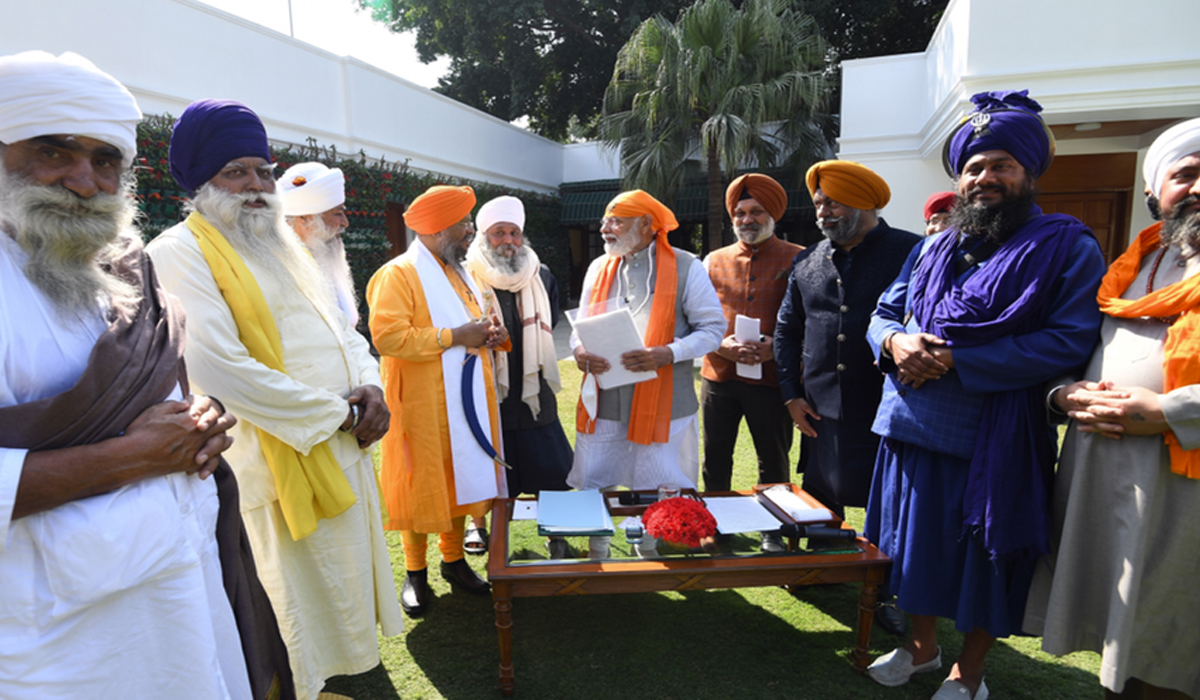
The 1984 anti-Sikh riots remain one of the most harrowing episodes in India’s post-independence history. Following the assassination of then-Prime Minister Indira Gandhi, thousands of Sikhs were brutally targeted in a wave of orchestrated violence that left an indelible scar on the nation’s conscience. Offcial records cite over 3,000 deaths—mostly in Delhi— though survivors insist the toll was far higher. Homes were torched, gurdwaras desecrated, and entire families wiped out while the law enforcement failed to prevent the carnage. For decades, justice r e m a i n e d e l u s i v e . Successive governments, particularly those led by the Congress party, were accused of shielding the accused—many of whom were politically connected. Cases were closed, investigations botched, and key figures like Sajjan Kumar and Jagdish Tytler evaded accountability. The Nanavati Commission (2000-2005) identified glaring lapses in justice delivery, yet little changed. The Sikh community’s faith in India’s judicial and political system eroded, leaving a festering wound.
A Turning Point: The Modi Government’s SIT and Historic Convictions
The election of Prime Minister Narendra Modi in 2014 marked a turning point. Unlike previous administrations, the BJPled government took concrete steps to address this historical injustice. In 2015, the Union Ministry of Home Affairs constituted a Special Investigation Team (SIT) to re-examine 286 closed cases. This was not a mere token gesture—it was backed by political will. The SIT’s work gained further legitimacy in 2018 when the Supreme Court appointed a three-member SIT to scrutinize 186 specific cases. The results were groundbreaking:
December 2018: The Delhi High Court overturned a lower court’s acquittal and sentenced Congress leader Sajjan Kumar to life imprisonment for his role in the killing of five Sikhs in Delhi’s Raj Nagar and the burning of a gurdwara in Palam Colony. The court called the riots a “crime against humanity” and noted how powerful figures had manipulated the system to evade justice for 34 years.
February 2025: In another landmark verdict, Kumar was convicted for the murder of Jaswant Singh and his son Tarundeep Singh in Saraswati Vihar. This case, too, had been buried for decades before the SIT’s intervention. These convictions were not just legal victories— they were moral reckonings. For the first time, high-ranking figures linked to the riots faced consequences, s e n d i n g a c l e a r message: no one is above the law, no matter how powerful.
Beyond Legal Justice: Symbolic and Substantive Gestures
The Modi government’s approach went beyond legal accountability. It acknowledged the cultural and emotional dimensions of the Sikh community’s trauma:
R e c o g n i t i o n a s Genocide: In 2019, PM Modi referred to the 1984 violence as a “horrendous genocide”—a term long demanded by Sikh groups. This was a stark departure from the Congress’s dismissive labeling of the events as mere “riots.”
Ka r t a r p u r S a h i b C o r r i d o r ( 2 0 1 9 ) : Fulfilling a decadesold demand, the Modi government negotiated with Pakistan to establish a visa-free pilgrimage route to Gurdwara Darbar Sahib in Kartarpur, the final resting place of Guru Nanak Dev Ji. This was a deeply emotional moment for Sikhs worldwide, with many crediting Modi for achieving what previous governments could not.
C o m m e m o r a t i n g Sikh Heritage: The government organized events like the 400th Parkash Purab of Guru Tegh Bahadur Ji (2022), where Home Minister Amit Shah honored the Sikh guru’s sacrifice for religious freedom. Such gestures reinforced the state’s respect for Sikh history.
Challenges and the Road Ahead
Despite progress, challenges remain. Some cases, like Sajjan Kumar’s acquittal in a separate 2023 trial, have disappointed survivors. The slow pace of justice in other pending cases is a legitimate concern. However, these setbacks must be viewed in context:
The Union government inherited a broken system where evidence was destroyed, witnesses intimidated, and cases deliberately weakened. Unlike past regimes, it has actively pursued reinvestigations, secured convictions, and ensured that the SIT operates independently.
A New Chapter in Justice and Reconciliation The 1984 anti-Sikh riots were a test of India’s commitment to justice and secularism. For too long, that test was failed. But under PM Modi’s leadership, the Union government has taken historic strides toward accountability, whether through the SIT’s convictions, symbolic recognitions, or cultural outreach.
The journey is far from over, but for a community that waited 40 years for even a semblance of justice, these efforts represent a turning point. They prove that in a truly democratic India, no crime, no matter how old or politically inconvenient, will go unpunished. The Union government’s actions are not just about correcting the past; they are about building a future where every Indian, regardless of faith, feels
